Happy Friday Beauties!
I’ve been looking forward to today’s post all week. We’re kicking off the first workout in our Pilates for Beginners Series.
As I mentioned last week, every Friday I’ll be explaining some of the foundational Pilates principles to help you get more out of your practice. Each post will include information on how to incorporate the principles into your workout and will be accompanied by a short Pilates For Beginners workout video.
These workouts will be slow-paced, gentle and focused on the details. Which if there’s one thing Pilates is…it’s detail-oriented. So I encourage you to join in no matter what your background. Going back to the basics is good for everyone.
Today we’re talking about neutral spine and basic hip mechanics.
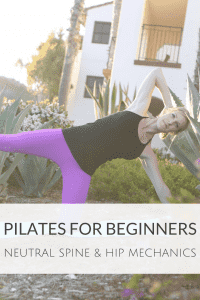
Neutral Spine
I teach Pilates with a strong focus on neutral spine. That is because I believe it is the most functional way to train the body. If you want to walk around each day with a healthy, neutral spine, you should learn how to properly strengthen and support that healthy, neutral spine in your workouts.
What is neutral spine?
Neutral spine refers to the natural position and of the spine that includes 4 curves. One at the back of the neck (cervical spine), one in the mid back (thoracic spine), one in the lower back (lumbar spine) and one at the end of the spine (sacrum).
The spine has a natural “S” shape that should be honored and protected. It’s brilliant really. The design of our spine allows us to balance in a standing position and provides shock absorption to protect our discs, nerves and tissues.

Think of it like a spring. If a spring was pulled straight, there is no shock absorption. The same is true for the spine. It needs the curves to weather the wear and tear of everyday life. Also, can you imagine jumping and landing if your spine didn’t have any “give”? Sounds jarring doesn’t it?
Pay attention to neutral spine as you go about your day. Notice when you are hold the natural curves vs slouching or swaying your back.
Throughout the workouts I will refer to neutral spine on a regular basis. More often than not you will want to maintain neutral spine. This will feel quite different during abdominal exercises if you are used to tightening your abs and subsequently flattening your back (which is very common).
Basic Hip Mechanics
This is a very simple overview and you could certainly go into much more detail on this topic, but for our purposes, the main thing I want you to know is that the hip joint is an important joint to use properly in order to avoid back pain and to develop true core strength.
Let’s focus on the relationship between the pelvis and the thigh bone (femur bone).
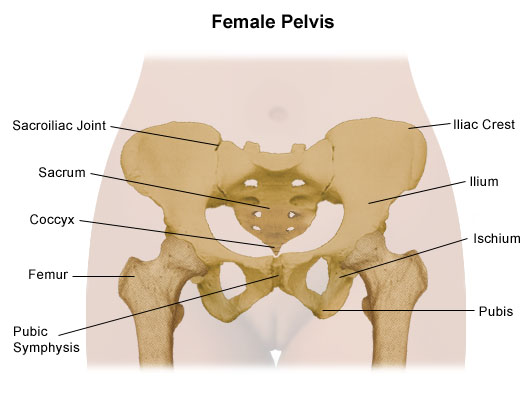
Your thigh bone inserts into the pelvis and is considered a “ball and socket” joint.
Key point: The thigh bone and the pelvis are separate. They are not one unit. The thigh bone is able to move without significantly moving the pelvis. Or in other words, the pelvis is able to remain stabilized while you move your legs.
Over the years, many of us lose the proper relationship between the legs and the pelvis, which can eventually cause problems/pain/weakness in the lower back and or/hip flexors. We get into unhealthy movement patterns of moving the pelvis and leg as one unit which has negative effects on the body in the long run.
So as you move your leg, think of the thigh bone rotating in the hip socket. If you tend to feel pain or a burning sensation in your hip flexors this is an important concept for you to consider.
The body is really an amazing thing and once we start to understand these basic principles, we will be able to train more effectively. Not only will we see better results, we’ll also have confidence in the fact that we are doing exercises in a way that will keep us healthy and strong for the long run.
So, without further ado, let’s dive into this week’s workout. It’s a short workout utilizing exercises that focus on neutral spine and basic hip mechanics to so that you can take all of this information and FEEL it within your body.
Enjoy!
xo,
You can sign up for the program here!
PS – you may also enjoy, What Pilates IS and IS NOT and The 6 Principles of Pilates.
PPS – if you find this series helpful I would LOVE for you to share it with your friends! Thank you. 🙂


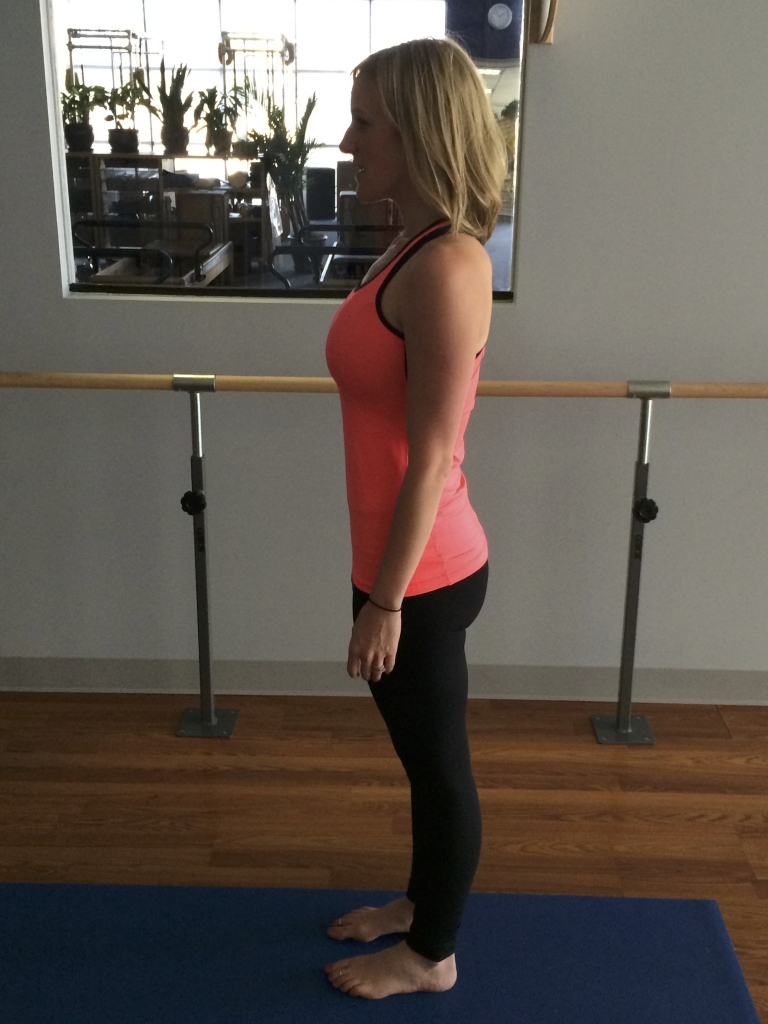


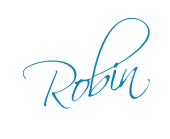
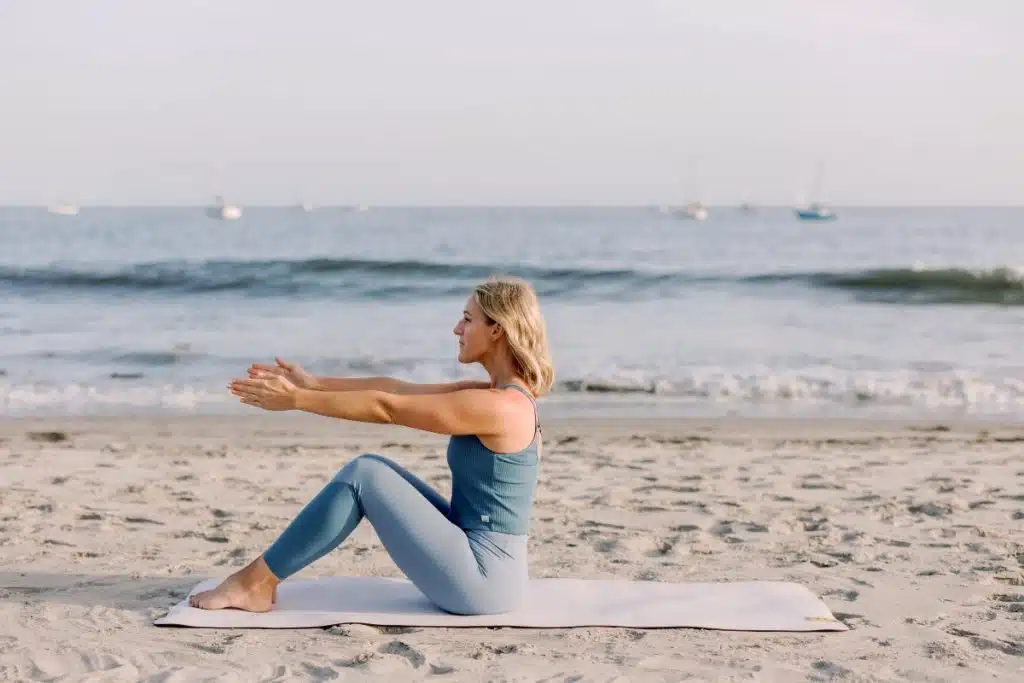
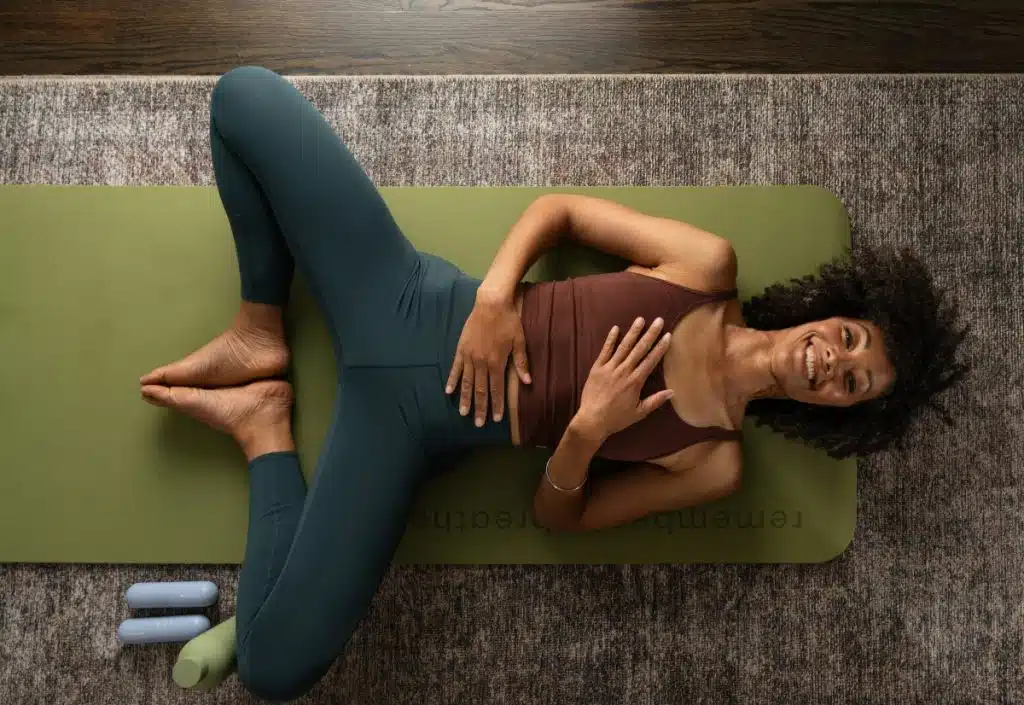
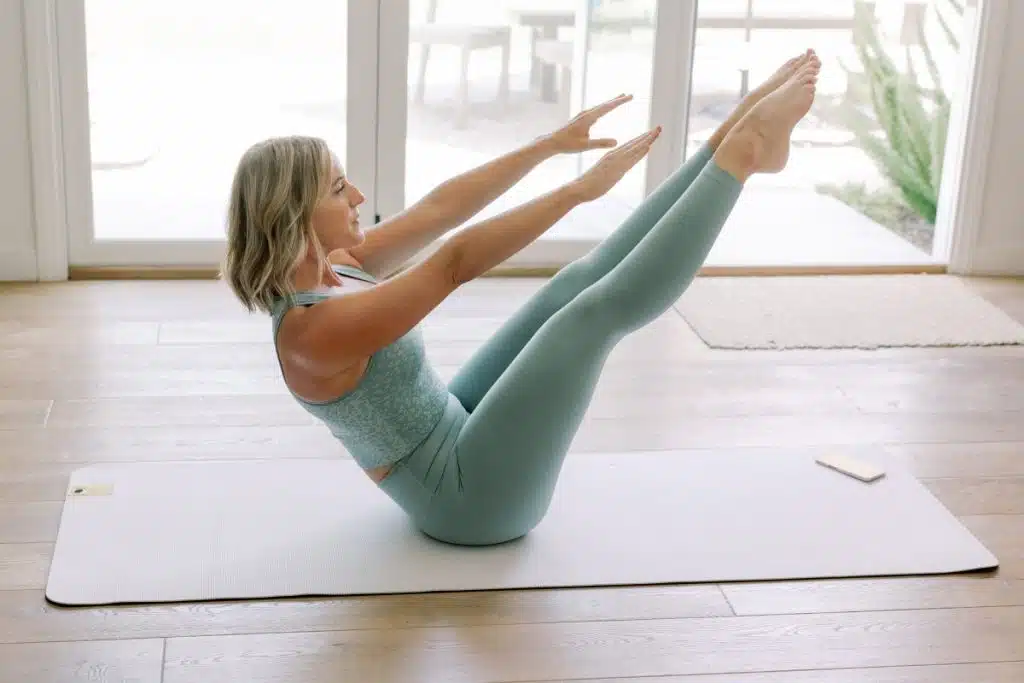



19 thoughts on “Pilates For Beginners: neutral spine + hip mechanics”
LOVED !! Thank you. Just had a baby in April and haven’t done Pilates in awhile. Thank you for taking it back to basics!!! I appreciate your time. 🙂 Be blessed
Congrats Katie! This is great for returning from pregnancy. Keep up the great work. 🙂
I just did this video last night and it is sooo helpful! I had no idea I was still flattening my back somewhat in a few positions and it was amazing to feel the difference when I paid attention and made sure I didn’t. Thank you, Robin! I can’t wait for the other videos in this series.
Hi Adie! I’m glad it was helpful! Sometimes those little tweaks can make a big difference. 🙂
Looking forward to following this series as I’m a newbie!
So happy to have stumbled across your wonderful work, I look forward to more.
This was so helpful!! I have been doing your videos for a while but had no other experience with pilates and have definitely not be doing them as well as I could have! I really felt a huge difference when I concentrated on these areas specifically, thank you!
Love this! I will be sharing this with my coaching clients. You are a blessing, Robin!!
Great to hear! Thanks Lisa!
Thank you so much for sharing this! I never quite understood what you meant in the previous videos when you would tell us to make sure we had neutral spine. This was really helpful to fully understand that concept! Only thing that I am still not clear on is when I am on my side. I never feel a space along my waist. I am not sure if this is only because I do not have as defined a waist or because there is a correction I need to make. Thanks again though for the insight!!!
Hi Katherine! Glad you found it helpful. When you’re on your side imagine that your body is up against a wall. So the back of your head would touch the wall, the back of your rib cage, and your booty. There would be a natural space between your neck + lower back and the wall. In regards to the waist, you may not actually have mouse hole, but you should feel as if you are trying to create on by drawing in the waist from all directions. 🙂
Maintain natural spine! Wow! what a difference that feels in the hip joints. Now I know where the pain in my back comes from. This is really an amazing and precious knowledge. I’ve been exercising with my back flat on the floor almost all my life and have suffered back pain for along time. The first time I followed this new exercise (last week) and maintained a natural spine, I could feel my thigh bone rotating in the hip socket and releasing that old tension. Very happy about this! It’s a keeper! Thank You, Robin. Great blessings to you! I like to pre-order the DVD if you have one. 🙂
Oh I’m so glad you found this helpful Tina! I hope that it continues to relieve back pain and help in the future. Keep up the great work!
Great Work Robin! It is a really detailed and helpful video. I have never done pilates before but to begin with your video explaining each step and the total mechanism makes it a lot easier to do it.
Also, if you could please help me understand about pilate exercises (any specific) which can help correcting bow legs?
I have this problem of lower back pain and weak hip muscles I am guessing which make my hips look like a weak shape (less muscles on the sides) and probably that is the reason behind bow legs as well.Do you think pilates can help me fix this problem?
Any suggestions would be greatly appreciated.
Apple, you may have joint hypermobility syndrome.
I have it, i have weak hips (one unlocks itself), foot pain, weak back muscles and chronic pain. It’s the reason I am here.
I am unable to do the plank because my spine gave way last year and collapsed. Basically, it’s a disorder of your connective tissues. Look it up.
Pilates is supposed to be helpful as long as you focus on building strength rather than flexibility.
Thank you for this video. 😀
Apple, you may have joint hypermobility syndrome.
I have it, i have weak hips (one unlocks itself), foot pain, weak back muscles and chronic pain. It’s the reason I am here.
I am unable to do the plank because my spine gave way last year and collapsed. Basically, it’s a disorder of your connective tissues. Look it up.
Pilates is supposed to be helpful as long as you focus on building strength rather than flexibility.
Pingback: Teaching Neutral Pelvis to New Pilates Clients
I am just coming out of a period of recovery following a damaged cartlidge Nietzsche my knee and thought I would go back to basic. I found it extremely helpful to be reminded about my neutral spine. Thank you so much for these videos. Go Pilates
hi Robin,
I’m so glad you’re spending time to explain the fundamentals of pilates – it’s changing the way i view workouts and my body movements!
I have a question on keeping a neutral spine while lifting my legs – I’m feeling my lower back the most (as in muscles at work/contracting) while I’m in any positions related to legs being lifted. Is that normal?
Also when I follow the exercise where I lift up my legs then let them down (the one in the transverse ab video), my mind is busy telling different muscles to contract to keep the spine neutral position. Is that correct?
Thank you so much!
Atena
Hi Atena!
We are so glad you are enjoying the Pilates for Beginners Series – it’s a wonderful place to learn the fundamentals of Pilates! When your legs are lifted, and you are working to keep neutral spine, be sure to continue to draw in your abs/core for effective movement and to take pressure off of your lower back and other muscles!